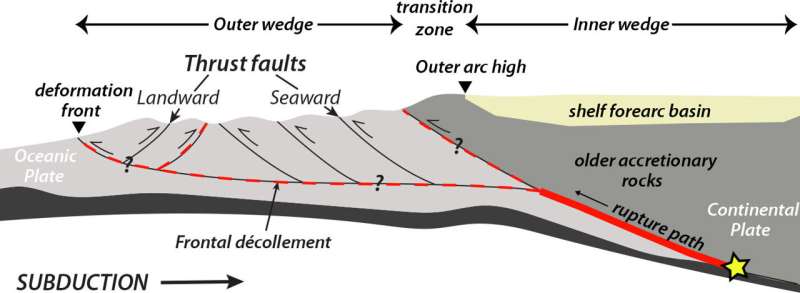Off the coasts of southern British Columbia, Washington, Oregon, and northern California lies the Cascadia Subduction Zone, a 600-mile-long strip where the Pacific Ocean floor dives eastward under North America. This area hosts a megathrust fault, a place where tectonic plates move against each other dangerously.
Tectonic Activity and Earthquakes
- Plate Movements and Stress Build-Up: The tectonic plates periodically lock up and build stress over wide areas. This stress is eventually released when the plates lurch against each other, resulting in massive earthquakes that shake both the seabed and land, and generate tsunamis over 100 feet high.
- Historical Earthquakes: The last major earthquake in this region occurred in 1700. Scientists believe big quakes in Cascadia happen roughly every 500 years, give or take a couple of hundred years.
Scientific Research and Understanding
- Purpose of Research: Scientists aim to understand the subterranean structures and mechanics of the Cascadia Subduction Zone to delineate areas most susceptible to earthquakes, estimate their potential magnitudes, and identify possible warning signs. This helps in designing building codes and warning systems to minimize damage.
- Recent Study: A new comprehensive survey using geophysical instruments has been conducted, revealing detailed structures beneath the seafloor. This study, published in the journal Science Advances, provides a new framework for earthquake and tsunami hazard assessment.
Key Findings
- Complex Geometry: The megathrust fault zone is divided into at least four segments, each potentially insulated against the movements of the others. This segmentation might mean that not all segments will rupture simultaneously during an earthquake.
- Segmentation Causes: The overriding North American continental plate consists of various rock types, causing the incoming oceanic plate to bend and twist differently across segments. This affects the subduction angles and might influence the extent of earthquake ruptures.
Focus on the Vancouver-Washington Segment
- Smooth Subduction Zone: The segment from southern Vancouver Island to Washington state has a smoother subduction interface, making it potentially the most dangerous as it may rupture along its entire length.
- Shallow Subduction Angle: The shallow angle of subduction in this segment could extend earthquake-prone areas directly under Washington’s Olympic Peninsula, possibly magnifying shaking on land.
Implications and Future Research
- Tsunami Hazards: Research is ongoing to model features of the seafloor that might generate tsunamis. These models will help assess the hazards on land.
- Preparedness: Findings from these studies will inform building codes and preparedness measures, with practical assessments expected to be published as early as next year.
Quotes from Researchers
- Suzanne Carbotte: “The megathrust has a much more complex geometry than previously assumed. The study provides a new framework for earthquake and tsunami hazard assessment.”
- Harold Tobin: “We can’t say that this definitely means only single segments will rupture, or that definitely the whole thing will go at once. But this does upgrade evidence that there are segmented ruptures.”
- Kelin Wang: “As for tsunami hazard, that is still a work in progress.”
Conclusion
Understanding the Cascadia Subduction Zone’s complex structure is crucial for preparing for potential earthquakes and tsunamis. Ongoing research and new data will continue to inform safety measures and improve our ability to mitigate the risks associated with this geologically active region.
Multiple-Choice Questions (MCQs):
- Where is the Cascadia Subduction Zone located?
- A. Off the coasts of Alaska and Hawaii
- B. Off the coasts of southern British Columbia, Washington, Oregon, and northern California
- C. Off the coasts of Japan and China
- D. Off the coasts of New Zealand and Australia
- What causes the world’s greatest earthquakes in the Cascadia Subduction Zone?
- A. Volcanic eruptions
- B. Tectonic plates locking up and building stress
- C. Meteor impacts
- D. Oceanic currents
- When did the last major earthquake occur in the Cascadia Subduction Zone?
- A. 1600
- B. 1700
- C. 1800
- D. 1900
- What significant finding did the new study on the Cascadia Subduction Zone reveal?
- A. The fault zone is a single continuous structure
- B. The fault zone is divided into at least four segments
- C. There are no significant hazards in the region
- D. The fault zone is only present in the southern part
- Why is the Vancouver-Washington segment considered potentially the most dangerous?
- A. It has the smoothest subduction interface
- B. It is the largest segment
- C. It has the deepest subduction angle
- D. It is the most studied segment
